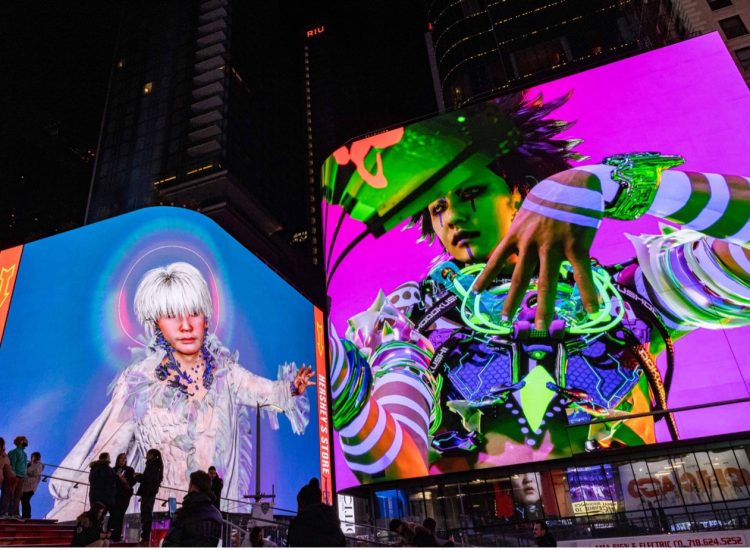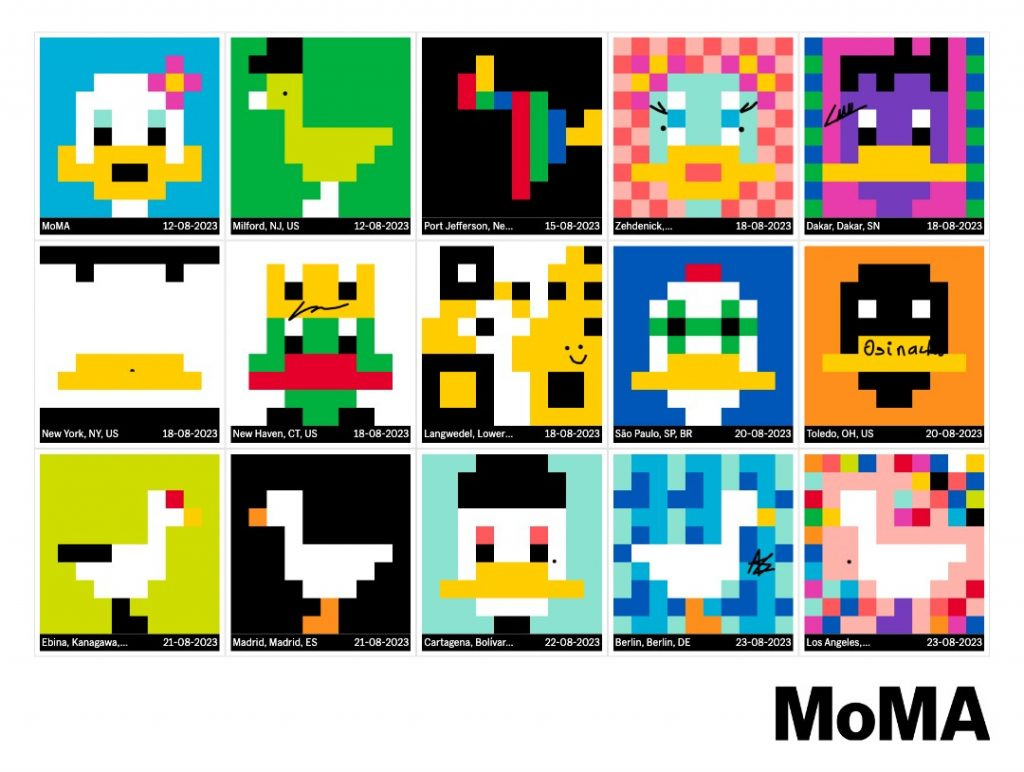What does 2024 hold for the world of art and technology? In the 1975 black comedy film A Boy and His Dog, 2024 is depicted as a time when humanity strives to survive underground after a nuclear war, possessing telepathic abilities to communicate with their dogs. Luckily, as of now, humans are still living above ground. Less fortunately, we cannot speak to dogs (though the scientists are working on it.) During a Twitter Space I hosted in 2023, artist Zach Blas reflected on the intertwining of technologies and systems of power, and their ideological underpinnings. His notion that technology, with its pervasive influence and fervor, can resemble a religion, seems particularly relevant today, when tech moguls Jeff Bezos and Elon Musk are enthusiastically building out “space habitats” and preparing to migrate civilization to outer space (in their own private shuttle services, of course), preaching faith in technology like modern-day messiahs. As for the world of NFTs, once the subject of much futurist-infused excitement, the enthusiasm for PFPs (Profile Pictures) has dimmed, and many don’t even use the word “NFT” anymore. Instead, people talk about “digital art on-chain.” Obviously, last year wasn’t about setting price records. Sales have been generally on the wintry side, with a few exceptions. However, communities continue to flourish, and 2024 was quietly a year of experimentation and community-building for digital art enthusiasts. The art-centric Tezos ecosystem consistently has around 50 thousand monthly active wallets (cited from Kaloh), indicating a still-niche but passionate demographic. For artists and collectors, the question remains: to be (on-chain) or not to be? Artists who avoid the term “NFT” want to steer clear of associations with scams and speculation, but also assert that the technology does not constitute an art genre. Meanwhile, for collectors, whether a work is on-chain or not can significantly impact both collection management and alignment with ideological beliefs: Some collectors exclusively acquire works on-chain, believing it is the natural format for digital art, while others do the opposite. As an advocate for on-chain digital art myself, I see 2024 as presenting abundant opportunities for more candid discussions about blockchain technology, strategies for sustainable artistic ecosystems, and a future that is more inclusive. In no particular order, and without any claim to being comprehensive, here are some digital-art highlights from the past year that will continue to shape our journey into 2024.

1.Refik Anadol’s generative artwork Unsupervised—Machine Hallucinations—MoMA
, on view at the Museum of Modern Art last year, unsurprisingly joined the institution’s permanent collection. This addition is courtesy of a joint gift from digital art collector Ryan Zurrer, through his 1OF1 Collection, and the RFC Collection, led by Pablo Rodriguez-Fraile and Desiree Casoni. Nor was this the only blockchain project for MoMA in 2023: The “MoMA Postcard” initiative was launched in October, led by museum Web3 associate Madeleine Pierpont. This project is a nod to the Mail Art movement. Each blockchain-based postcard evolves collaboratively, accumulating stamps and contributions as it travels from one destination to another. No transactions are involved. Thus, “MoMA Postcard” represents an experiment in collective creativity on the blockchain, allowing everyone to create and explore blockchain technology. The first 15 artists invited by the museum to co-create digital “postcards” include: p1xelfool, ykxotkx, Grant Yun, Peter Burr, Anna Lucia, Sasha Stiles, Operator, Osinachi, IX Shells, Kim Asendorf, Sarah Friend, Linda Dounia Rebeiz, Casey Reas, LoVid, and Dmitri Cherniak.
2. In February, the Los Angeles County Museum of Art (LACMA) revealed a substantial donation of blockchain-based artworks from NFT collector Cozomo de’ Medici. The donation includes 22 digital artworks by a cohort of 13 artists: Justin Aversano, Cai Guo-Qiang, Dmitri Cherniak, Claire Silver, Neil Strauss, Monica Rizzolli, Matt DesLauriers, Adam Swaab, Pindar Van Arman, plus a few including CryptoPunks and World of Women. This announcement coincided with LACMA’s “Coded: Art Enters the Computer Age, 1952–1982,” an exhibition showcasing the ascent of computer technology and the genesis of digital art.
3. Also in February, the Centre Pompidou announced the acquisition of a series of 18 NFTs from 13 artists: Aaajiao, Emilie Brout and Maxime Marion, Claude Closky, Fred Forest, John Gerrard, Agnieszka Kurant, Jonas Lund, Larva Labs, Jill Magid, Sarah Meyohas, Robness, Rafael Rozendaal, and John F. Simon Jr. The acquisition—the first of its kind by a major French public museum—came as a result of a joint effort between scientific and administrative teams from the French Ministry of Culture and the Pompidou’s director, Xavier Rey.

4. The Whitney Museum of American Art recently acquired Ian Cheng’s NFT creation, “3FACE,” produced by the inventive digital art publication Outland. Cheng’s piece stands as an adaptive artwork, marking a new addition to the museum’s collection. Notably, this isn’t the Whitney’s first foray into blockchain-based work (the first NFT was a gift of Eve Sussman’s
89 Seconds Atomized
; the original piece from 2004 is in the Whitney collection already). Spearheading the acquisition is
Christiane Paul, the Digital Art Curator who oversees the digital art committee established in 2017.
5. The art world bid farewell to Vera Molnár, a pioneering figure in computer-based and generative art, when she passed away in December 2023 at the age of 99. Molnár’s extensive exploration of mathematical principles and programming languages laid the foundation for contemporary algorithm-based digital art. In her final creative venture last year, she collaborated with generative artist and creative coder Martin Grasser to delve into the realm of NFTs. In July, their collection, “Themes and Variations,” achieved a remarkable feat, selling out instantly on Sotheby’s and accumulating a total sales volume of 631 Eth ($1.2 million).






Leave a Reply